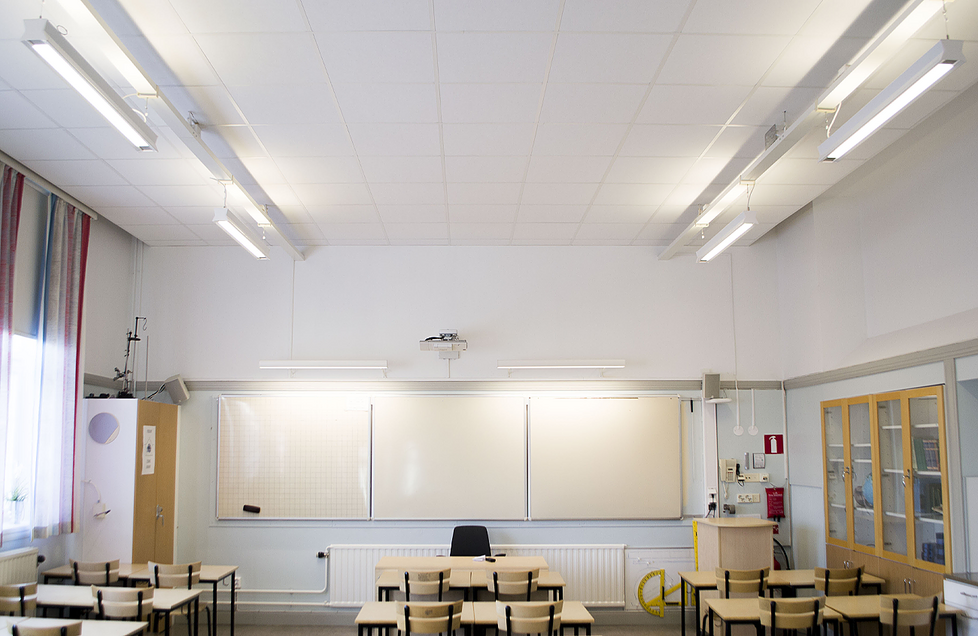
The school environment can rise learning for Swedish children.
2023 12 12
The school is the country's largest workplace. Our children and youth also spend a significant part of their waking hours here. When only 39 percent of the country's eighth-graders report a sense of calm in the classroom, and teachers leave the profession due to stress, the work on the physical environment needs to be taken seriously. This is stated by Henrik Håkansson, CEO of the lighting company Aura Light.
Sweden's schools find themselves in a challenging economic situation, and the debate surrounding education is filled with crucial questions about learning, classroom atmosphere, and teachers' working conditions. Despite most of us recalling the feeling after a day in a stuffy classroom, the sound of thirty chairs scraping against the floor, or the ticking of a half-broken fluorescent tube with anything but nostalgia, conversations about schools seldom focus on the physical environment.
Recently, the results of the latest PISA report were released, revealing the status of children and youth in the Swedish education system. The Swedish results are at the same level as the lowest point in 2012. It's higher than the OECD average but lower than the other Nordic countries. Concerning the classroom climate, the survey indicates that disruptions are more frequent in Swedish classrooms than the average for other countries in the study. Once again, we fare worse than our Nordic neighbors. The starting point for the question about the classroom climate is a math lesson. In most OECD countries reporting a better perceived classroom climate, there is a correlation with better results in mathematics.
Last year, 15 percent of ninth-graders graduated from compulsory school without eligibility for high school. That corresponds to 18,205 children in Sweden. According to psychologists studying the school environment, the physical space has a significant impact on well-being, focus ability, and productivity. Despite this, many schools today are designed in a way that creates more distraction than focus. Those with good focus ability might overlook poor soundproofing or inadequate lighting, but when the auditory and visual environment is lacking, it's the students facing the most challenges in school who are affected the most.
Light is estimated to account for 80 percent of all our sensory impressions, and studies show that children are particularly affected. Daylight is crucial for health, and according to the Public Health Agency of Sweden, daylight-lit school environments can increase students' performance by up to 18 percent. However, to ensure a good lighting environment, natural light needs to be complemented with electric light.
According to a survey we conducted among schools in 2021, the equivalent of six out of ten classrooms had outdated lighting. Investing in high-quality, long-lasting lighting is a wise move, especially because it is an investment in our children and youth. Moreover, efficient fixtures and light sources are environmentally friendly and can contribute to reduced energy costs. As municipal expenditures rise, it is crucial that the purchases made are sustainable over time. Therefore, I would like to offer three concrete pieces of advice to the country's municipalities:
- The issue of the physical school environment needs to be prioritized when politicians discuss educational outcomes and the well-being of children and youth.
- Administrative leadership and management can review the criteria for school purchases. The right specifications can contribute to both cost reduction and improvement of the school environment simultaneously.
- Schools can install smart lighting that allows the light in classrooms to be adjusted based on needs to create focus, calm, and a sustainable environment.
When considering both teachers and children, the school is Sweden's largest workplace. That's precisely why it's important to think about what the working environment looks like. Let's ensure it offers the best possible conditions for learning and safety.
Henrik Håkansson, CEO of Aura Light
